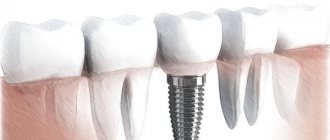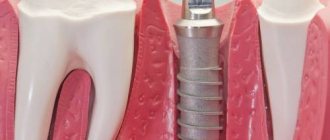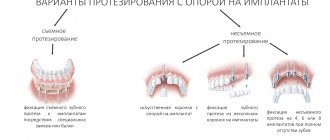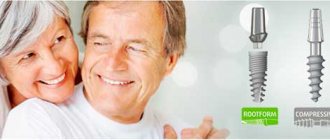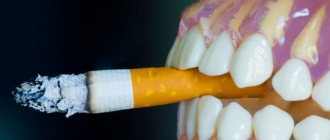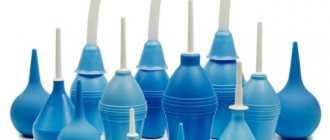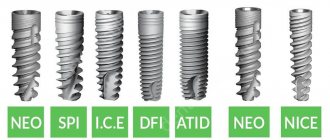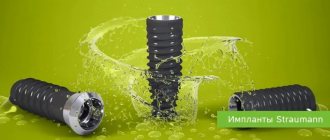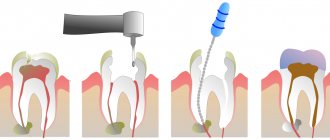- Causes of gum sensitivity Vigorously brushing teeth
- Changes in hormone levels
- Irritation from dental plaque
- Gingivitis
- Toothpastes
When inflammatory processes occur, the gums become red, itchy, and swollen.
Many people believe that these symptoms will go away over time and think that everything is fine. But if you start the problem of gum sensitivity, you can face more serious consequences. We tell you how to deal with sensitive gums at home, when to go to the dentist and what to choose for daily care.
Use of Chlorhexidine in dentistry
Upon contact with the mucous membrane, it forms a thin protective film. The effect lasts after the procedure for 24 hours.
Shown:
- with gingivitis;
- in case of development of periodontitis;
- against the background of treatment of stomatitis;
- in case of inflammation of the socket after tooth extraction;
- for inflammation caused by semi-impacted wisdom teeth;
- for disinfection of removable dentures;
- for root canal treatment;
- after installation of dental implants.
An alcohol-based chlorhexidine is used to treat the hands of a dental surgeon.
The antiseptic enhances the effect of surface anesthesia, therefore it is often prescribed together with Lidocaine. This reduces the number of bacteria at the injection site. Able to fight pathogenic microorganisms after removing stone and plaque.
Types of inflammatory gum diseases
We looked at the reasons that are not related to diseases. Now let's talk about what types of inflammations you should go to the doctor for. These include the three most common diseases: gingivitis, periodontitis and periodontal disease. Let's look at each of them in more detail.
Gingivitis
Gingivitis is an inflammation of the dentin tissue around a specific tooth. It occurs in both chronic and acute forms. The inflammatory process manifests itself only on the gums, without affecting the tooth tissue. Therefore, it is quite simple to cope with gingivitis before it progresses to the stage of periodontitis.
Periodontitis
Periodontitis is the inflammation of the tooth tissues that support it. This tissue is located between the root of the tooth and the jaw bone. The disease gradually moves the gum away from the tooth, forming a gum pocket. In other words, the gums expose the teeth, and they become sensitive. Food gets clogged into the gum pockets, pus appears in the acute phase, and the teeth gradually become loose and shift.
Inflammatory diseases are easy to distinguish by visual examination: with gingivitis - only redness and swelling, with periodontitis - also receding gums
What solution to use for rinsing the mouth after implantation
It is recommended to use an aqueous 0.05% solution. It is effective even with large blood clots after extraction and promotes rapid wound healing. Rinses are prescribed in courses as prescribed by the dentist. You cannot use the drug for longer than the recommended period due to the risk of severe irritation of the mucous membrane.
Smokers and people with diabetes can use alcohol-based Chlorhexidine rinses. This composition ensures high safety and stabilization of the drug. Local treatment with an alcohol-containing drug significantly reduces the formation of plaque in the oral cavity, especially after implantation.
What symptoms indicate inflammatory processes?
We have looked at the main reasons why gums become inflamed and bleed. But how to deal with the symptoms? What exactly indicates the disease until the gums begin to bleed and become swollen?
In addition to insufficient oral hygiene, inflammation can be caused by untimely treatment of pulpitis, the formation of tartar along the gum line, as well as fillings and crowns with an overhanging edge.
Symptoms include:
- pain when pressed or touched;
- bad breath;
- itching and redness around the tooth;
- discomfort when biting food;
- loosening of teeth.
How to do mouth baths correctly
At the beginning of the rehabilitation stage, it is difficult to perform hygiene procedures. Therefore, the patient is prescribed rinses with antiseptics. For the first few days, it is recommended to apply a bandage or cotton swab soaked in a 0.1% solution. Then proceed to direct rinsing, which must be done carefully .
Until the wound has completely healed, rinsing is replaced with oral baths.
«
You can use the drug up to 6 times a day, 10 ml. Rinsing takes 1-2 minutes. You cannot brush your teeth or eat food for half an hour after the procedure.
Rinsing is a good prevention of gum suppuration under the implant, eliminating the risk of bacteria entering the wound. To enhance the effect, during the first 2-3 days you can alternate with Betadine every other time.
General recommendations
The most important rule in such a sensitive issue will be timely assistance from a qualified specialist. Therefore, if your tooth suddenly starts to hurt badly, this is not a reason to just take a pill and forget about this unpleasant moment, this is a good reason to go to a dental clinic, where you will be given first aid.
With any removal, complex or ordinary, there are a number of rules that must be followed to speed up the healing of the wound, as well as avoid abscesses and other negative consequences.
- Removing the gauze compress. The doctor leaves cotton wool or gauze after tooth extraction. A maximum of one hour after arriving from the dentist, you must carefully remove the protective swab. If it has dried out and stuck to the gum, do not remove it until you soak the area with chlorhexidine, since careless movement can damage or even remove the clot hiding the wound.
- Pain relief. Any discomfort after tooth extraction is a normal process for which you need to be prepared. Ice or any cool item from the refrigerator will help relieve discomfort. The selected item is wrapped in a towel and applied to the sore cheek. In addition to relieving pain, this action will help reduce the chances of swelling. However, this action also has its limitations: ice can be applied several times, making sure to take a break of 5-7 minutes.
- Eating. In the first few hours after tooth extraction, be it a molar or a chewing tooth, you should not eat any food, even if you are very hungry. Over the next 24 hours, the temperature of the food should only be at room temperature. Food should not be too spicy or salty, this can cause additional irritation of the mucous membrane.
- Limit alcohol and smoking. On the first day after tooth extraction, you should refrain from drinking alcoholic beverages. Even a small dose of alcohol can cause blood vessels to dilate, which will ultimately lead to bleeding from the wound. Smoking is permissible, but again at least 2-3 hours after the operation.
- Applying and removing sutures. If sutures were placed at the dental clinic after tooth extraction, the patient is usually invited for a follow-up appointment in a week. In some cases, the sutures dissolve on their own within two weeks.
- Dental treatment. For those who are now closely involved in treating the entire oral cavity, a reasonable question arises: when can the procedures be continued? If the removal was not difficult, then it will be possible to resume meetings with your doctor after 7 days.
The use of Chlorhexidine for swelling of the gums
The drug is indicated for relieving inflammation of local gum swelling after implantation or tooth extraction. Its antimicrobial properties help avoid suppuration and infection of the wound. Helps reduce swelling and irritation of the mucous membrane.
On average, the course is 1 week. To perform oral baths, liquid is drawn into the mouth, held for 1-2 minutes and spit out. If the procedure is performed after brushing your teeth, you must thoroughly rinse off any remaining toothpaste. The components in its composition can sharply reduce the effectiveness of Chlorhexidine.
Important restrictions after tooth extraction
Each patient, in addition to recommendations, should also know what not to do:
- Visit the bathhouse, sauna or swimming pools. Experts also recommend limiting yourself to a short period of time by taking a shower rather than a hot bath.
- Go to the gym and take on heavy physical activity;
- Experiencing stress, which, oddly enough, can seriously affect the wound and even contribute to the opening of bleeding;
- Get into the mouth, in the wound area with dirty hands;
- Touch the site of tooth extraction, be it the tongue or fingers, because this will certainly lead to damage to the clot;
- Brush the removal area with a toothbrush;
- Actively rinse your mouth, because any aggressive external actions can lead to clot disruption and the development of alveolitis.
It is worth noting that representatives of the fair half of humanity are not recommended to remove teeth during the menstrual cycle, because this will only provoke bleeding from the resulting wound.
Advantages and disadvantages of the drug
Positive properties of the drug:
- kills pathogenic microorganisms (antimicrobial activity is higher than that of Miramistin);
- maintains a long-lasting antiseptic effect even upon contact with bloody and purulent secretions;
- used in low concentrations, which protects the oral mucosa from irritation;
- impossibility of overdose;
- affordable price.
Negative points include:
- weak or zero effect in the treatment of viral diseases, especially like herpes;
- bitter, unpleasant taste causes discomfort;
- Regular use leads to darkening of the enamel and surface of the tongue.
Taking medications after tooth extraction
Experienced specialists recommend taking antihistamines. They will help avoid swelling of the cheeks, because in addition to working on allergic reactions, antihistamines also have an anti-edematous effect.
You should not overdo it with medications if the pain is tolerable and tooth extraction was a procedure of ordinary complexity. A little trick that can be remembered for the future is to take an analgesic even before the patient stops feeling the anesthesia administered by the doctor.
As for antibiotics, it is strictly not recommended to take them without a corresponding prescription from the attending physician. In what cases does the surgeon issue a referral for the purchase of necessary medications:
- for difficult removal;
- with the development of the inflammatory process;
- in case of concomitant diseases such as stomatitis or candidiasis.
Possible contraindications and side effects
"Chlorhexidine" has practically no contraindications, with the exception of various groups of dermatitis. The manufacturer warns about possible intolerance to the drug and allergic reactions to the components of the solution, but practice shows that allergies to the drug are very rare - less than 1% of patients.
Contraindications and side effects
Side effects during use are rare. Patients may experience increased dryness of the mucous membranes of the oral cavity, tingling, burning and itching. These phenomena are of moderate intensity and do not require discontinuation of the drug or cessation of treatment.
Important! Most patients tolerate Chlorhexidine well, but in very rare cases, adverse reactions may occur. Extremely rarely, intolerance can manifest itself as a pinpoint, pale pink rash on the surface of the tongue, gums and inner surface of the cheeks. If this symptom appears, you should consult a doctor.
"Chlorhexidine" is sold in all pharmacies
What to do if the drug is accidentally swallowed?
During the procedure, it is necessary to avoid getting Chlorhexidine into the stomach, but if this happens, there is no need to panic. The need to take any measures depends on the amount of the drug that enters the stomach. If the volume does not exceed one sip, you can do nothing, but at the same time carefully monitor how you feel.
- What medicine is put into the hole after tooth extraction?
If pain or cramping occurs in the abdomen, it is necessary to rinse the stomach with warm soda or saline solution, and then take any sorbent drug, for example:
- "Neosmectin";
- "Smectu";
- "Filtrum-sti";
- Activated carbon;
- "Polysorb".
Activated carbon
The same steps must be performed if the amount of medicine swallowed is more than 10 ml. If you feel unwell, have intestinal or stomach cramps or signs of intoxication, you should consult a doctor.
"Chlorhexidine" is one of the most famous and affordable antiseptics used in dental practice. It allows for disinfection of the oral cavity after surgery and prevents pathogenic bacteria from entering the socket of the extracted tooth. If you use Chlorhexidine according to the regimen prescribed by your doctor, you can avoid serious complications, for example, purulent-infectious lesions of the periosteum or alveolitis. During use, it is important to follow the precautions described in the official instructions for the drug.
